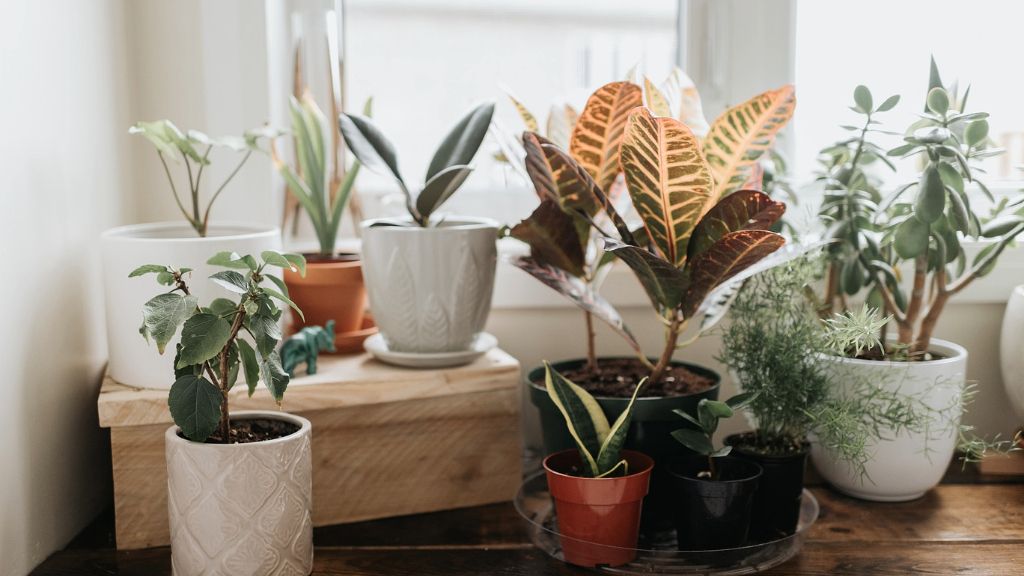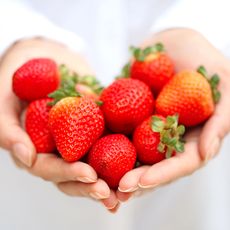Top 10 Questions About Houseplants


Here at Gardening Know How we get lots of questions, and our goal is to provide answers to those inquiries to the best of our knowledge. These may run the gamut of vegetable gardening to trees and shrubs, and anything or everything in between. Houseplants are one such topic of interest, as most of us grow at least one plant in the home. The following information includes the 10 most commonly asked questions relating to houseplants.
1. What does it mean when indoor plants turn brown at the end of leaves?
There are several reasons for this happening, but under watering is the most common for plant leaves turning brown, especially on the tips. Make sure the plant is getting enough water and has proper drainage. Generally, you want to water only when the top of the soil is dry to the touch but do not let the soil dry out completely. Check for issues that may inhibit its ability to take water up too, like root rot. A humidity issue can be to blame as well. This can be remedied by misting or sitting the plant on a water-filled tray of pebbles. You may also want to check the plant for any signs of pests or disease, and trim off the brown tips.
2. I have a houseplant that has started to lose a lot of leaves. Why?
There are many reasons that a plant may lose leaves, but the three most common are lack of water, lack of light and pests. Make sure that the plant is getting proper water and light, and check it closely for pests. Generally speaking, when leaves fall off plants, it's either because the light is too low, the soil is either too wet or too dry, or there is disease or bugs present. Additionally, leaf drop can be due to environmental changes, such as with bringing them indoors for over wintering. In most cases, this type of leaf drop will correct itself once the plant has acclimated to its new environment.
3. How do I get rid of mushrooms in a houseplant?
Mushrooms in houseplants is actually quite common and not usually anything to be alarmed about. That being said, they can be unsightly. The spores that cause mushrooms growing in houseplant soil is normally introduced by contaminated soilless mix, though on occasion they can be introduced through other means, such as airborne movement or spores brushing off clothing. In addition, this type of mushroom growth, which usually presents itself as yellow in color, favors warm, moist and humid conditions. Generally, keeping the plant less moist and giving it plenty of air circulation can help alleviate this growth.
Gardening tips, videos, info and more delivered right to your inbox!
Sign up for the Gardening Know How newsletter today and receive a free copy of our e-book "How to Grow Delicious Tomatoes".
4. My houseplant has a white, fuzzy looking substance on the leaves. What is this and how do I get rid of it?
Mealybugs will commonly leave a white residue on plant leaves that resembles cotton. This residue is either the egg sacs of the mealybugs or the pests themselves. You may also find that the plant is sticky too. This is honeydew secreted by the mealybugs. Scrape away any white residue and spots. Then, using a solution of 1 part alcohol to 1 part water with some dish soap mixed in, wash down the entire plant. Let the plant sit for a few days and repeat the process. Another mealybug home pest control is to apply neem oil to the plant, which is safe for the plant and also doubles as a fungicide.
5. What is the white powder forming my indoor plants?
Generally, if you see a white powdery coating on your pots, it means that the plant was either over fertilized or the water it receives contains chalk. If the powdery substance is on the plants themselves, it usually indicates a problem with powdery mildew. Indoor powdery mildew occurs when there is poor air circulation, low light and, unlike outdoor powdery mildew, thrives in drier conditions. It is contagious and once one part is affected, it will infect the rest of the plant as well as those nearby if left untreated. Neem oil can help with this common fungal issue.
6. Several of my houseplants are turning yellow. Why is this happening?
What types of plants are being affected? Different plants have different requirements for water, lighting, fertilizing, etc. How often do you water them? Yellowing leaves could be due to over- or under-watering. Feel the soil - if it's damp or soggy, you have been over-watering your plants. If the soil is bone dry, the plants are under-watered and need a drink. Yellowing leaves can also be attributed to insect pests, lack of sunlight or being root bound.
Some plants may need to be allowed to go dormant for the winter months, while others need to be cared for throughout the winter with more specific needs. Watering needs generally change while indoors and even though you have a sunny window, for example, this may not be enough light for most outdoor varieties. Plants can be placed under grow lights to help give them additional light. Lack of humidity can also be a cause of plant decline in the winter. Misting can help, as will setting the plant on a tray of pebbles and water. With proper care, it's really not that difficult to keep houseplants alive through winter.
8. How often should I water my houseplants after fertilizing (or in general)?
For most houseplants, you should be watering based on the plants' needs rather than a schedule. What your plants need, however, can vary. Some plants, like cactus and succulents, need the soil to be almost completely dry before you water them. Others, like rubber trees or umbrella plants, need the topmost portion of the soil (about an inch or so) to be dry before you water. And still others, like African violets and many carnivorous plants, need to be moist all the time. If you are using a water based fertilizer for houseplants, then that counts as a watering so check the soil based on your plant's watering needs afterward. If you are using a granular, solid or powdered fertilizer, water right after you fertilize so that the fertilizer does not burn the roots.
9. I have several houseplants that are infested with gnats. How do I get rid of them?
It sounds like you have fungus gnats. Fungus gnats almost never occur in numbers large enough to damage plants, but they're still annoying little buggers. They are typically more common during fall or winter and attracted to overly moist soil. Allowing the plants to dry out some and treating them with neem oil is generally effective. Also, they live mostly in the top 2 inches of soil, so before any other treatment, scrape off this soil and replace with gardening, or builders SAND - gnats can't live in the sand because it doesn't hold water. If you have other plants, put the affected one by itself so the gnats don't spread. And don't use muddy potting soil; if you open the bag and it's wet, or any bugs fly out of it, return it. Try not to buy soil where it is stored outside.
10. Do I need to bring my plants (on front porch) inside for winter?
Unless this porch is heated or temps remain above 50 degrees F. (10 C.) over winter, then yes, you will need to bring these plants indoors. Also, the best time to bring plants inside is when nighttime temperatures start to dip below 55 to 60 F. (12-15 C.). Before bringing container plants indoors, check for pests that may be living in the soil. Submerge each pot in warm water for 15 minutes to drive any insects or slugs to the surface. If you see a lot of life, spray with an insecticide, like neem oil, and repot your plant. We all have questions now and then, whether long-time gardeners or those just starting out. So if you have a gardening question, get a gardening answer. We're always here to help.

Nikki Tilley has been gardening for nearly three decades. The former Senior Editor and Archivist of Gardening Know How, Nikki has also authored six gardening books.
-
 How To Grow Strawberries From A Strawberry: All You Need To Cultivate Yummy Fruits
How To Grow Strawberries From A Strawberry: All You Need To Cultivate Yummy FruitsYou may know how to grow strawberries from small plants or runners – but what about growing from the fruit? Here we show you how to grow strawberries from a strawberry
By Mary Ellen Ellis
-
 Best Tomatoes For Containers: 10 Tastiest Varieties For Plentiful Produce In Compact Areas
Best Tomatoes For Containers: 10 Tastiest Varieties For Plentiful Produce In Compact AreasThese are the best tomatoes for containers that prove you don't need to have a large space or elaborate garden to grow delicious produce.
By Bonnie L. Grant